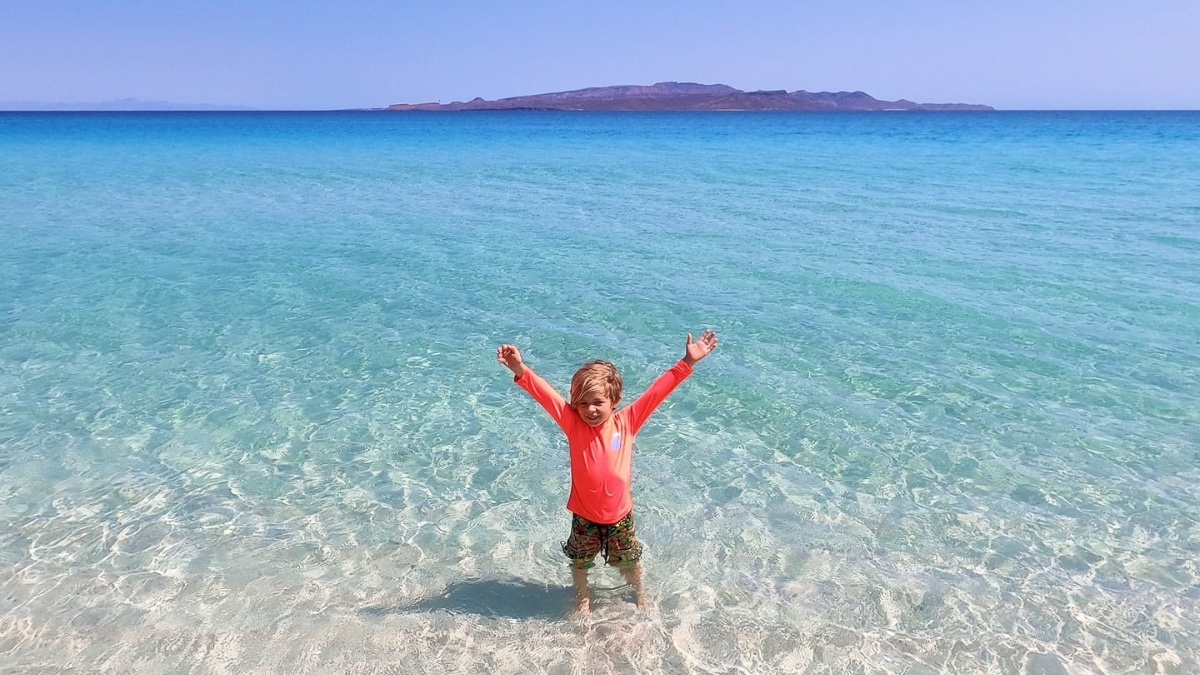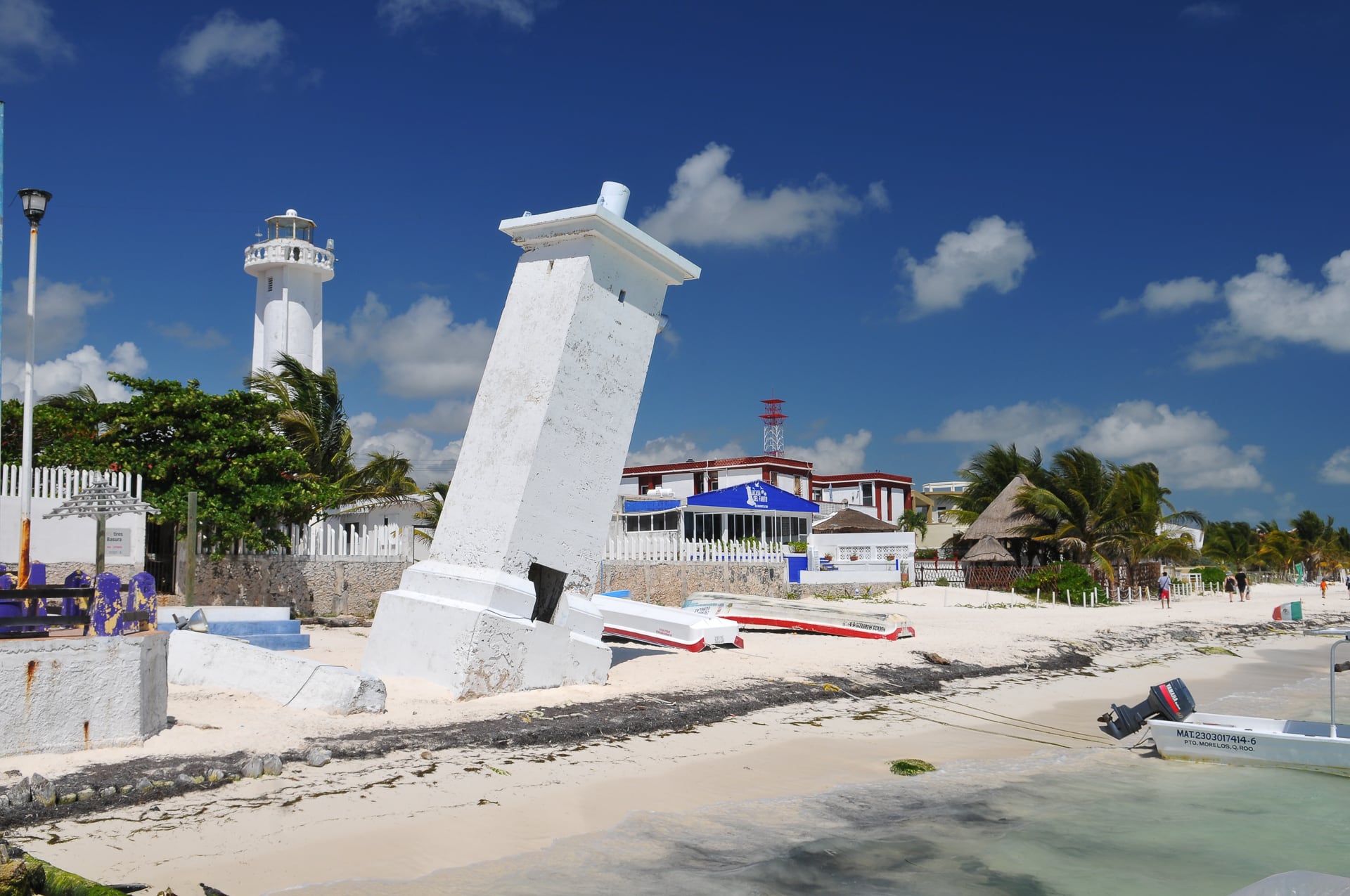Today, we’re exploring the Yucatan’s charming and colorful “Yellow City,” clambering up Mayan ruins and taking in the Spanish colonial architecture, as well as the people and food of this idyllic inland pueblo.
We spent the month of February with Lori’s parents, traveling around Belize and then on to Mexico’s Yucatan peninsula. Our first stop in the Yucatan was the colonial city of Izamal, also known as the “Yellow City,” for reasons that will quickly become obvious.

We stayed in Belize’s most northern town of Corozal the night before, which put us in good position for crossing the border early the next day and driving the five hours onward to Izamal. Two things surprised us on our drive: the city of Valladolid, which appeared to be a place worth visiting in its own right, and how few gas stations there were between the border and Izamal.

A few things about fuel while we’re on the subject — fuel is cheap in Mexico compared to Belize (US$3.50 per gallon — about half the price), it’s nationalized (Mexico produces its own petrol and the industry is government regulated, which accounts largely for the vast difference in pricing between the two countries), and Pemex (the name of the gas stations in Mexico) does take credit cards, just not any of ours (we were told by one of the attendants that the machines only work with cards from Mexican banking institutions).
Ideally in the future I’d like to write an entire post on driving in the Yucatan, crossing the border with a vehicle, etc., but for now, let’s get back to Izamal.

Hotel San Miguel Arcangel
We had a blast in Izamal, and in no small part due to the city and its sights (and the fantastic weather). But our hotel elevated the experience to another level. Hotel San Miguel Arcangel blew our socks off (well…I don’t think any of us were wearing socks, but you get the idea) for the incredible value it offered — ranking the hotel among our all-time favorites. Not only was the price right (about $50 per room per night — one of the rare occasions we booked two rooms for the four of us), but the hotel is about as central as you can get, as charming as you can get (beautiful colonial building in excellent repair — fresh paint, rich wood accents, even a fountain which seemed to be cleaned daily), and the staff were extraordinarily friendly.

Rooms came complete with tile floors, flatscreen TV, mini fridge, air conditioning, and everything else you’d expect from a boutique or luxury hotel costing hundreds of dollars a night.

For more information, here is what I wrote on my tripadvisor review:
You really can’t beat this place. Besides being just a gorgeous and well-maintained property, the staff were exceptionally friendly and the room was clean and spacious. We stayed in one of the balcony rooms looking out to the plaza and my wife’s parents stayed in the balcony room looking out towards the garden.
The plaza room has high (20ft.?) ceilings, more colonial charm and a great view of the government building, convent and rest of the plaza. It’s a bit nosier on this side, but with the AC on, it really didn’t bother us. Both of our rooms came with refrigerators and excellent wifi internet. The garden area in the back is a nice place to relax (for something unique, head to the table on the upper level of the old stone structure).
If you happen to be coming to Izamal under your own steam, parking was incredibly easy. We had no problem getting a parking place right across from the front entrance on the main square. The area is patrolled at night by security guards and we encountered no issues over our two nights.
Only downsides were that the hot water took a very long time to heat up in the morning (several minutes) and the included breakfast wasn’t as large as other complimentary continental breakfasts we’ve had (but they do serve additional breakfast items at very reasonable prices). Overall, this is an incredible value in a central location of a beautiful city.


Upstairs open-air common area.

Upper garden looking back to the hotel rear.



Front of Hotel San Miguel Arcangel.

Convento San Antonio de Padua
With a population of just over 16,000 and an area of about four square miles, Izamal is a compact and very walkable old colonial city. All of the action radiates from the Convento de San Antonio de Padua. In the 16th century, the city held much significance in the Yucatan for the Spanish colonial powers, and in fact it was the capital of the region until Merida’s rise to prominence.
The main colonial structures were built atop existing Mayan pyramids, and the convent was built upon the main Mayan acropolis, indicating that the city site held some significance within the Mayan empire as well. In addition to numerous well-preserved colonial structures, several Mayan ruins can also be explored. While none are as impressive as the structures in nearby UNESCO site, Chichen Itza, you can still climb to the top of those in Izamal.

The convent dominating the center of Izamal is significant for several reasons. For one, it has one of the largest enclosed atriums in the world (pictured above); it is a pilgrimage site for many Catholic faithful who believe that many of the statues of saints inside the convent perform miracles; it was also visited by Pope John Paul II in 1993, who crowned and blessed a statue of the Virgin Mary in the main chapel. There is no entrance fee to walk around (though donation is suggested) and the convent holds a nightly light show in the atrium (in Spanish, of course).


Our guide insisted that we have a photo taken in front of this massive painting depicting the Virgin Mary (above) — apparently it’s what all the cool visitors/ pilgrims do. Hey…when in Mexico…

Walking Around Izamal
As mentioned before, Izamal is a very walkable town. In addition to its compactness, there isn’t a lot of traffic and residents are very friendly — a refreshing kind of friendly — the kind of friendly that can be found in small, charming towns that aren’t yet UNESCO sites and simply don’t get high numbers of people that look like us…but get enough so that we aren’t a complete novelty. Basically, no staring and finger pointing, but very little (if any) soliciting or hustling. Imagine, people going about their daily lives (not for the sake of tourists) who don’t alter their behavior because of a visitor’s presence, but rather treat you like they would anyone else in town. It’s a beautiful balance that is increasingly hard to find these days (BUT STILL EXISTS!).

A street in Izamal. Yellow City? I’m just not seeing it…are you?


View of one Mayan ruin from another, just outside of town.


A crazy tortilla machine at a Tortilleria!

Lori and Ron (Lori’s father) discussing some good ol’ fashion tortilla-makin’ with the shop owner.



We also visited a couple of the many woodworking workshops around Izamal.

…and scaled the largest Mayan pyramid around Izamal, a short walk from the town center.



A fountain in the center of one of the main plazas.

The convent at sunset from our private balcony at Hotel San Miguel Arcangel.

The evening hubub in the main plaza after the heat of the day had begun to subside.

A quiet street around Izamal at sunset.




Our one big food recommendation in Izamal was recommended to us by the friendly señora at the front desk of our hotel. It can be hit or miss with hotel staff, but her recommendation was right on. The place is called Muul, right off of the main plaza (not the one adjacent to the hotel, but the other one around the corner). Muul is a great local place with tasty food at great prices and the guy who runs the joint is quite the amiable fellow as well. Try the cochinita pibil and Izamal’s very own tequila (called Izamal).






